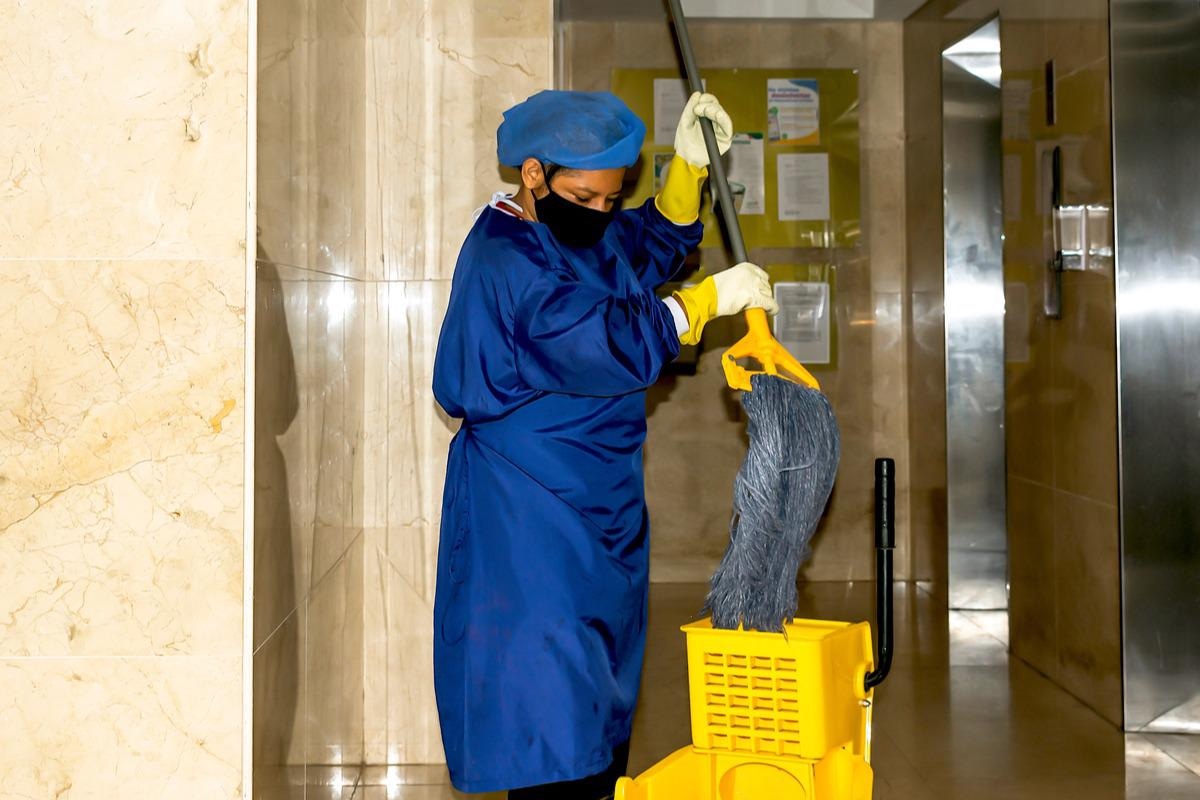A team of scientists from the United States has recently unveiled that environmental contamination of severe acute respiratory syndrome coronavirus 2 (SARS-CoV-2) in households by surface sampling. Moreover, the findings reveal that certain bacterial communities in surface samples can be used as predictors of SARS-CoV-2 positive or negative status.
 Study: SARS-CoV-2 Distribution in Residential Housing Suggests Contact Deposition and Correlates with Rothia sp. Image Credit: Luz Zuluaga Photography/Shutterstock
Study: SARS-CoV-2 Distribution in Residential Housing Suggests Contact Deposition and Correlates with Rothia sp. Image Credit: Luz Zuluaga Photography/Shutterstock
The study is currently available on the medRxiv* preprint server, whilst the article undergoes peer review

 This news article was a review of a preliminary scientific report that had not undergone peer-review at the time of publication. Since its initial publication, the scientific report has now been peer reviewed and accepted for publication in a Scientific Journal. Links to the preliminary and peer-reviewed reports are available in the Sources section at the bottom of this article. View Sources
This news article was a review of a preliminary scientific report that had not undergone peer-review at the time of publication. Since its initial publication, the scientific report has now been peer reviewed and accepted for publication in a Scientific Journal. Links to the preliminary and peer-reviewed reports are available in the Sources section at the bottom of this article. View Sources
Background
SARS-CoV-2, the causative pathogen of coronavirus disease 2019 (COVID-19), is an enveloped, positive-sense, single-stranded RNA virus that primarily spreads via respiratory droplets or aerosols. However, there is evidence claiming that viral transmission can occur via contaminated surfaces. During previous outbreaks of other beta-coronaviruses, such as Middle East respiratory syndrome coronavirus (MERS), several studies have been conducted to detect the presence, persistence, and viability of the virus on surfaces and in air. The evaluation of environmental contamination is particularly helpful in understanding the persistence of viable viruses on high-touch surfaces in hospitals or isolation rooms that can actively participate in viral transmission.
In the current study, the scientists have assessed the presence of SARS-CoV-2 on indoor surfaces to understand the possibility of direct (touching surfaces) or indirect (via droplets or aerosols) viral transmission.
Study design
For estimating viral loads on surfaces, the scientists collected a total of 381 samples from three housing units where SARS-CoV-2-infected individuals resided in isolation. They collected respiratory samples from each infected individual on the day of surface sampling. All surface samples were tested for SARS-CoV-2 using reverse transcription-polymerase chain reaction (RT-PCR).
Furthermore, the scientists investigated whether there is an association between SARS-CoV-2 positive or negative status and the presence of bacterial communities in tested samples.
Important observations
Of 381 tested samples, 178 were positive for SARS-CoV-2 (47%). The positivity rates were comparable in two housing units (53% and 61%); however, the third unit had a significantly lower positivity rate (24%). In all tested units, the viral detection rate was the highest in bedrooms. Similarly, the highest viral load was observed in high-touch surfaces (switches and handles), followed by floors and high-use objects (refrigerator, sink, toilet, and bed). In objects with plane surfaces and handles, such as refrigerators, cabinets, and drawers, the detectable viral load was observed only on touched handles, but not on plane surfaces.
The analysis of alpha diversity of bacteria in tested samples revealed a statistically significant association with SARS-CoV-2 positive/negative status. However, the findings indicated that the presence of a bacterial community is not sufficient to predict SARS-CoV-2 status in a single sample.
Further analysis of differentially abundant bacteria in tested samples revealed that Rothia dentocariosa is positively associated with SARS-CoV-2 status. Rothia dentocariosa is a Gram-positive bacterium belonging to the normal microbial community located in the mouth and respiratory tract. In addition, certain bacterial communities belonging to the genus Corynebacterium were identified as predictors of SARS-CoV-2 positive samples.
Study significance
The study findings demonstrate the presence of SARS-CoV-2 and related bacterial communities on high-touch surfaces of households with SARS-CoV-2-infected individuals. The study highlights the significance of surface sampling as a sensitive and low-cost method for detecting environmental SARS-CoV-2 contamination in residential housing.
Importantly, the study has analyzed the changes in bacterial communities in SARS-CoV-2 infected individuals that can be detected in the indoor environment. In many surface samples obtained from various locations, Rothia dentocariosa has been identified as an independent predictor of SARS-CoV-2 positive status.
Although bacterial communities belonging to the genus Corynebacterium have been identified as predictors of SARS-CoV-2 status in surface samples, previous studies have shown that COVID-19 patients exhibit a significantly lower level of Corynebacterium in the oral microbiome. In the current study, the scientists hypothesize that the presence of Corynebacterium and SARS-CoV-2 in surface samples might be associated with skin contamination.

 This news article was a review of a preliminary scientific report that had not undergone peer-review at the time of publication. Since its initial publication, the scientific report has now been peer reviewed and accepted for publication in a Scientific Journal. Links to the preliminary and peer-reviewed reports are available in the Sources section at the bottom of this article. View Sources
This news article was a review of a preliminary scientific report that had not undergone peer-review at the time of publication. Since its initial publication, the scientific report has now been peer reviewed and accepted for publication in a Scientific Journal. Links to the preliminary and peer-reviewed reports are available in the Sources section at the bottom of this article. View Sources
Article Revisions
- May 9 2023 - The preprint preliminary research paper that this article was based upon was accepted for publication in a peer-reviewed Scientific Journal. This article was edited accordingly to include a link to the final peer-reviewed paper, now shown in the sources section.